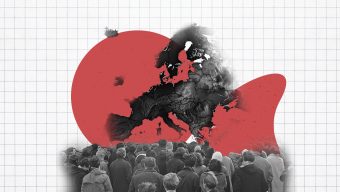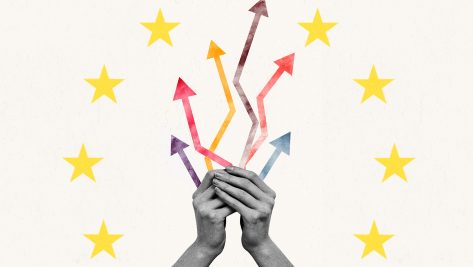What does the unexpectedly tight US election tell us about the United States, its role in the world, and what to expect from this country in the future?
Before the 2020 election, or possibly before 2016, it seemed reasonable to say that the United States was a diverse, dynamic, and relatively conservative country with a broad consensus on a large degree of individual freedom and a less regulated economy, with lower taxes and smaller government than anywhere in Europe.
Donald Trump’s victory of 2016, however, showed that on the far right side of this broad consensus a new group had emerged, rallying around gun ownership, opposition to abortion and resistance to the forces of globalization and secularization. These people were mainly white Americans in rural areas, who tended to be less educated. Many of them were evangelical Christians. On the other side stood urban America, younger, more educated, more secular and comfortable with the immense diversity that flourishes on the American coasts and in large cities. Its voters wanted to protect the environment, strengthen social safety nets for the poor, and embrace a more diverse, multi-cultural society. Looking at the two demographics, it was tempting to say that the Trump camp was doomed to gradually fade away as urbanization and globalization marched ahead.
Yet the election has made it clear that the Republican party did not dig its own grave when it swung sharply to the right with Trump. Even in the wake of a pandemic and a very low presidential approval rating, Trump held on to nearly half of the popular vote and his party kept the Senate seats which Democrats had hoped to recover.
If the vote count last Wednesday morning is a good indication, the United States remains deeply divided between two groups of voters of about 70 million each. Their perspectives on the world are radically different, and both sides hold passionately to their beliefs, as evidenced by the largest voter turnout in more than a century. Social media has separated them into echo chambers, intensifying the hostility so that some families no longer speak to each other and many would frown on seeing one of their children marry someone from the other party. Both groups are very much alive and likely to be with us for the foreseeable future.
The election also showed, however, that the two sides are less monolithic than they seemed. Although it was tempting to expect that the black vote would go to Joe Biden after Trump tacitly supported ultra-right racist groups, many black voters supported Trump (rather than vote for the woman who will become the first black vice-president in the United States, Kamala Harris) because they believed he had been good for the economy. Trump’s border wall and his disparaging comments regarding Mexicans might have been expected to put Hispanics firmly on Biden’s side. But Biden lost Florida largely because so many Hispanics, frightened by Trump’s claims that the Democrats would bring Socialism to the United States, voted Republican. Cuban and Venezuelan immigrants were prominent among these. Many Mexican Catholics also supported Trump because of his anti-abortion stance. Meanwhile, tens of thousands of evangelicals abandoned Trump and voted for Biden because they yearned for decency and moral values in public life. The majority of white women also turned against Trump. In fact, the only stereotypes that this election confirmed were the rural/urban divide and the differences in educational levels between the two sides.
Nevertheless, the polarization manifested in the campaign and the close race showed the challenges implicit in governing two large groups of voters who share so little common ground. The new president, Biden, has pledged to address rising inequality in the United States with higher taxes on the rich and corporations; to invest large amounts of money in infrastructure and “green” projects; and to bring back and broaden Obamacare so that most Americans could have health insurance. He also promised to take strong measures to contain the COVID pandemic. With the result likely to put the Senate in Republican hands and the presidency and House of Representatives in Democratic hands, it is hard to imagine how the country will progress toward solving these important problems.
Yet there could be some good news in Biden’s victory. Biden took a clear majority of the popular vote, indicating that many moderate Republicans voted for him. If he has to govern with a Republican Senate, he will be forced to tread a moderate line if he hopes to achieve anything. In doing so, Biden could possibly pull the country back toward the center and reduce the polarization that Trump both aggravated and exploited. In this way, the fact that a “blue wave” of Democratic votes did not materialize could actually hold out hope for a more united America.
It is worth recalling that despite its divisions, the United States continues to be the dynamic source of much of the technology and innovation enjoyed by the rest of the world. Maybe a country does not need to agree on much in order to provide a stable framework for business, a good environment for creative thinking and risk-taking, and a respect for the rule of law in the world’s oldest democracy.
Only time will tell whether the divided America that has revealed itself to the world will be able to maintain its consensus and regain a center ground and a more unified electorate.
This article was updated on November 11, 2020 to reflect news developments.
© IE Insights.











